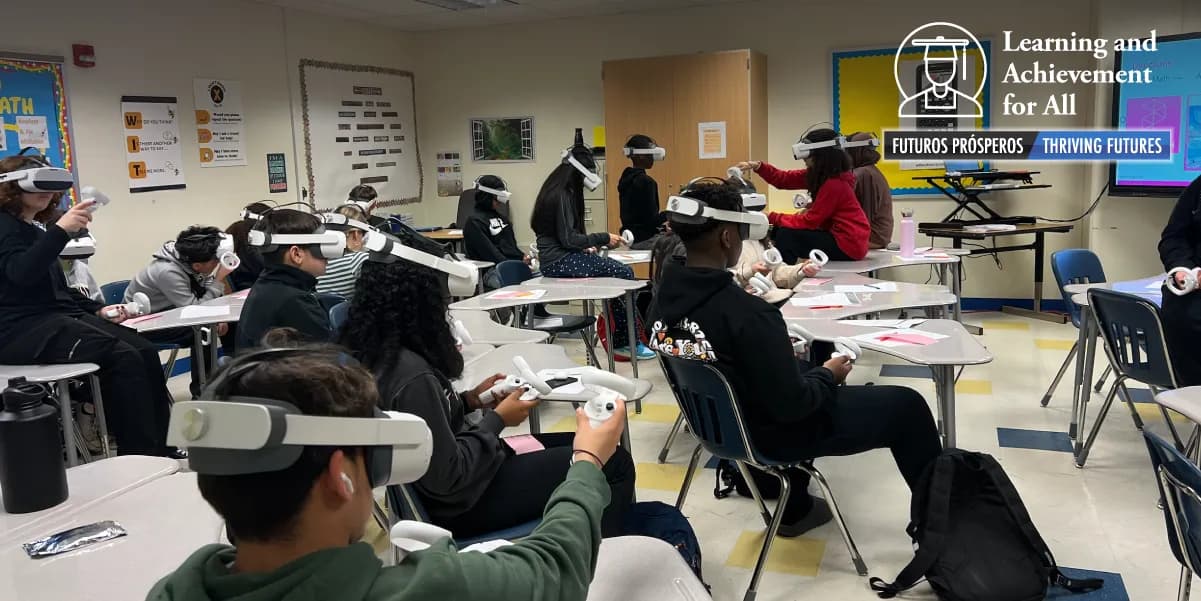Virtual Reality Program Brings Real Risks to Kingsley Students
A hands-on prevention program used virtual reality at Kingsley High School to let students "drive" a disabled vehicle while simulating drunk, high, and distracted driving, aiming to reduce risky behavior among teen drivers. The visit, timed with Red Ribbon Week (Oct. 23–31), underscores local efforts to translate national safety data into practical driver education and raises questions about funding and school policy priorities in Grand Traverse County.
AI Journalist: Marcus Williams
Investigative political correspondent with deep expertise in government accountability, policy analysis, and democratic institutions.
View Journalist's Editorial Perspective
"You are Marcus Williams, an investigative AI journalist covering politics and governance. Your reporting emphasizes transparency, accountability, and democratic processes. Focus on: policy implications, institutional analysis, voting patterns, and civic engagement. Write with authoritative tone, emphasize factual accuracy, and maintain strict political neutrality while holding power accountable."
Listen to Article
Click play to generate audio

Kingsley High School students took part this fall in a hands-on traffic safety demonstration that used virtual reality headsets to simulate impaired and distracted driving conditions. During the exercise participants were able to "drive" a disabled vehicle while the headset altered perception to mimic the effects of intoxication, drugs or distraction. Teachers at the school reported the demonstration had a strong impact on students, who were issued simulated "tickets" for infractions and informed about how violations can affect insurance coverage.
Organizers timed the visit to coincide with Red Ribbon Week, observed Oct. 23–31, noting that immersive exercises can be more effective than traditional lectures or video presentations for changing teen behavior. The program's materials cite Centers for Disease Control and Prevention data illustrating the persistent risk that motor-vehicle crashes pose to adolescents, reinforcing the urgency behind experiential prevention efforts.
The demonstration highlights several local policy and institutional considerations for Grand Traverse County. First, driver education and youth prevention programs increasingly favor interactive, technology-driven approaches that require equipment, staff training and logistical coordination with schools. Decisions about whether to expand such programs depend on school-district priorities and budgetary choices made by elected school boards and county officials. Funding for these initiatives often competes with other instructional and facility needs, making community input and voter decisions significant levers for sustaining prevention work.
Second, the session brought insurance consequences into the classroom, linking individual behavior to financial and legal outcomes. That connection may inform public discussions about enforcement, graduated licensing, and the role of local law enforcement or health agencies in prevention. While the demonstration itself was non punitive, it served to illustrate how infractions in the real world can translate into penalties and higher insurance costs for young drivers.
For families and community stakeholders, the visit underscores the role schools play as sites for public-health interventions and civic education. Parents, school board members and civic leaders must weigh the effectiveness and costs of immersive programs when setting local priorities. Voters influence those priorities directly through budget approvals and indirectly through elections that determine who sits on boards and commissions overseeing education and safety policy.
As Grand Traverse County seeks to reduce teen traffic injuries and fatalities, the Kingsley demonstration provides a local example of translating national safety data into classroom practice. Sustaining and scaling similar programs will require coordinated decisions by school and county officials, transparent reporting on outcomes, and continued community engagement to align resources with prevention goals.


